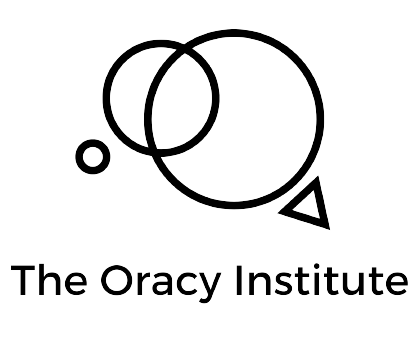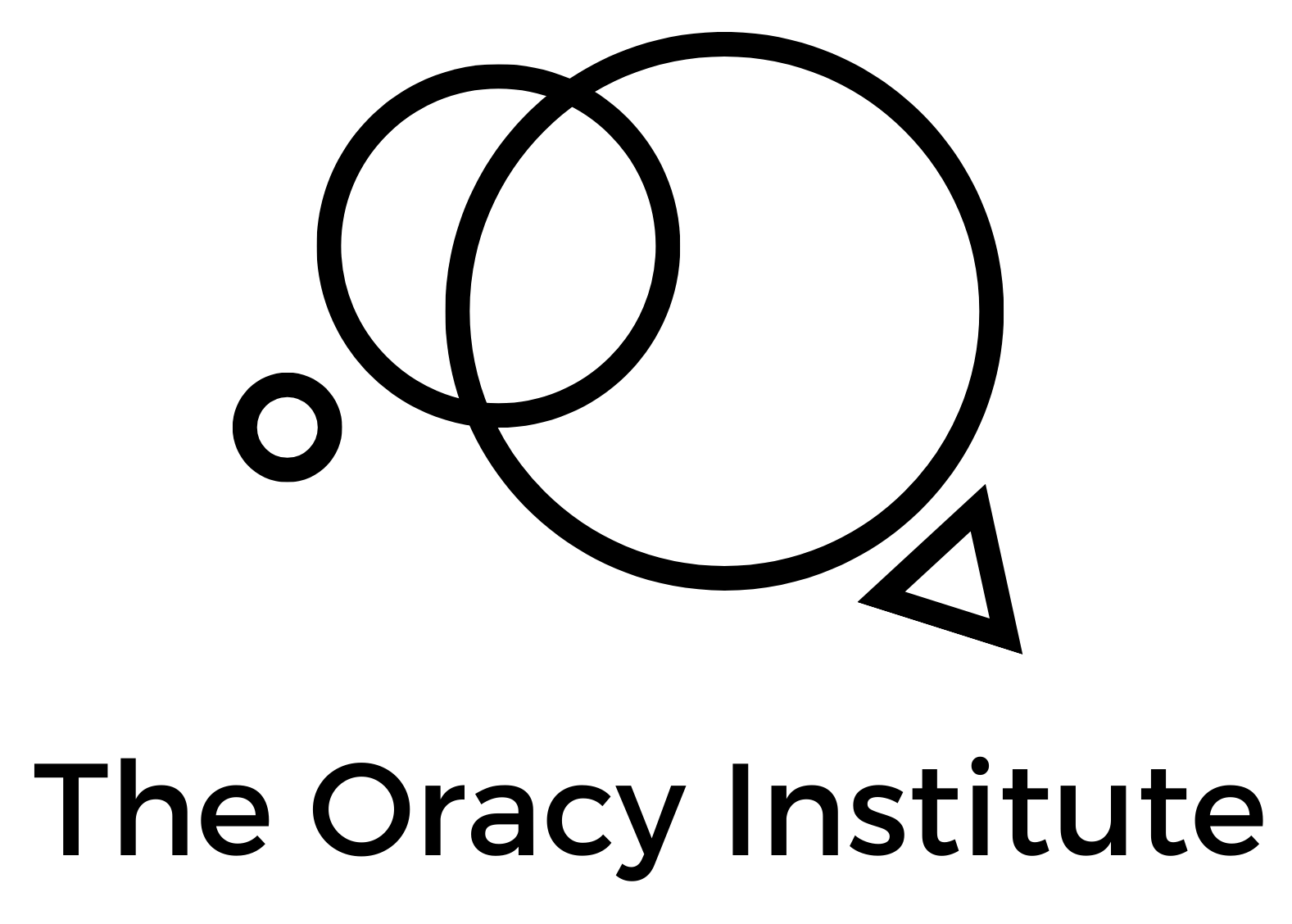How to Structure Speeches
It happens too often— students get assigned to deliver a speech, prepare for hours, do their research; but the final outcome is a confusing 5-minute babble that is difficult to keep track of. High-quality speeches are more methodical than most people think; they should be constructed with a clear end goal in mind, follow a cohesive order of operations, and speakers should provide their audience with a roadmap of what will be discussed.
In order to achieve this effectively, students must have a clear overview of which components should be included in their speech, as well as how to structure to make it easier for listeners to follow along. For most classroom speeches, we recommend the following speech structure for intermediate students:
Introduction
Announce Subtopics
Body of the Speech:
Subtopic 1
Subtopic 2
Subtopic 3
Conclusion
Here is a step-by-step guide on how your students can master all these components!
Introductions
A common misconception is that the primary goal of an introduction should be to grab the audience's attention; it is more nuanced than that, grabbing the attention of the audience is useless if the speaker isn’t able to retain that attention throughout their speech. Therefore the primary goal is not
getting their attention, rather it is to attract their
interest, this way speakers are significantly more likely to
keep their audience’s attention. The best way to captivate the audience’s interest is to challenge them by making them realize there’s something they don’t know yet!
Many people start their introduction by introducing themselves or summarizing what they’ll be presenting in their speech, although this could be good for sign-posting and familiarizing them with the topic, it is packaged in a way that sounds like a lecture the audience has to sit through, rather than an exploration of new information the audience is eager to uncover. The best way to achieve this is to create a problem to which listening to the content of the speech is the only solution. One way to do this is to ask them a question they don’t know the answer to, and keep the suspense by slowly answering it throughout the rest of the speech. Here are a few examples of ways this can be done:
List of Services
-
A speech is being given about how language evolves:List Item 1
“Why do we say “heads up” when we want someone to duck their head down?”
-
A speech is being given about Indian weddings:List Item 2
“Why do Indian brides not want to wear white on their wedding day?”
-
A speech is being given about mathematics:List Item 3
“How have mathematicians built an entire numerical language that can explain trillions of findings in our universe, despite not yet having proven 1=1?”
By asking the audience a question that they don’t immediately know the answer to, the speaker effectively makes them want to keep listening in order to find out the answer! Here is an example of a speaker who implements this technique:
A similar effect could be achieved by telling the audience something unexpected about the topic, which makes them feel like they don’t actually understand the topic they thought they did, which makes them long to discover what the real information is and what other misconceptions they should correct.
Here are some more examples of ways this can be done:
List of Services
-
A speech is being given about chemistry:List Item 1
“Contrary to popular belief, the sky isn’t actually blue”
-
A speech is being given about subjectivity in english literature:List Item 2
“The world’s most talented novel analysts still haven’t settled a question that has already spanned over 70 years, is “Catcher in the Rye” a coming-of-age novel or a critique on society? I don’t think this can be considered a question, because it is impossible to ever be answered.”
-
A speech is being given about evolution:List Item 3
“You might think you have nothing in common with chickens, but they are actually 60% identical to humans in the genomes that shape our DNA; we share a very recent common ancestor”
By defying the expectations of the audience, the speaker intrigues them to hear more about the content of the speech! Here is an example of a speaker who uses this technique:
Want to know more about delivering compelling introductions? [hyperlink to 7S model]
Announce Subtopics
Have you ever gotten distracted while a student is presenting, tuned back in, and then struggled to follow what they are talking about now? How useful would it be to have an agenda so you can see what the next topics of discussion are? When delivering a speech, the speaker should provide their audience with a roadmap of the material that will be discussed, so that listeners are able to keep track of the content and line-of-logic posited. In order to achieve this, at the end of the introduction, speakers should flag the titles of the subtopics they will be presenting!
Subtopics are to speeches what chapters are to a book: they help organize and present information in a clear and digestible way. In a persuasive speech, the subtopics are the different arguments the speaker makes, while in an informative speech, the subtopics are categories used to organize and break down the main topic into manageable points of discussion. Content can be categorized based on different stakeholders, time frames, reasons, or any other metric that supports the main point the speaker aims to make. How can speakers choose the right metric? Look for the common theme among the points and consider the goal of the speech. Once the main point has been identified, the most relevant points of discussion towards the main point can be divided into various aspects for a structured and effective presentation.
Here are a few examples of how content can be divided into subtopics:
A speech about global trade:
 Button
Button1. The influence of supranational organizations on global trade
2. The influence of monetary unions on global trade
3. The influence of the internet on global trade
A speech about unreliable narrators in novels:
 Button
Button1. Unreliable narrators add dimension & complexity to the content
2. Readers have the opportunity to have individualized interpretations
3. Character development is achieved on a deeper level
A speech about autocracies:
 Button
Button1. North Korea’s totalitarianism
2. Singapore’s benevolent dictatorship
3. Vatican City’s absolute monarchy
A speech about innovative technology:
 Button
Button1. The invention of the wheel revolutionized transportation
2. The invention of the steam engine revolutionized manufacturing
3. The invention of the internet revolutionized information access
A speech about cell division:
 Button
Button1. Phases of Mitosis
2. Rounds of Meiosis
A speech about the Vietnam war:
 Button
Button1. The Vietnam war was caused by cold war conflict
2. The USA’s involvement escalated the Vietnam war
3. The Paris Peace Accords ended the Vietnam war
A speech about data analysis:
 Button
Button1. Descriptive statistics
2. Inferential statistics
3. Exploratory Data Analysis
4. Dimensionality Reduction
As can be seen in the examples above, subtopics can be divided on any metric, however, if you would like to teach your students specific ways to categorize their content, read our text on how subtopics can be generated in our advanced blog: [hyperlink]
There is an important step speakers should complete in their speech before they delve into the content within each subtopic, speakers should signpost what the different subtopics are so that their audience can follow what they’re saying easier. Announcing subtopics is simple; students could name the thesis of each subtopic in order, or just use a descriptive word to title each point they’re making. Here’s an example for a speech about gender inequality:
“In my first subtopic I’ll explain the gender inequalities in the workforce, then I’ll be explaining how gender disparities lead to inequality in the judicial system, and lastly I’ll be explaining inequalities in the confines of the home”
When students announce what they will be presenting and the order in which it will be done, the audience can more easily track where they are in their speech! It is important that listeners are provided with a roadmap of the speech in order to be able to view the big picture of the point being made and be provided with a structure to orient their thoughts.
Present Subtopics
When students deliver their subtopics, it is important for them to explain them extensively and spoon-feed the material to the listeners. This is because the speaker might have different understandings of the subtopic than the audience does, the best way to bridge this gap is to outline information and explain the reasoning in a way that the audience can follow the speakers’ train of thought in real-time. Here are 2 tips you can give your students to take their explanations to the next level; explain in depth, and explain in width!
When explaining in width, speakers cover a broad range of reasons when delivering explanations. In contrast, explaining in depth refers to picking less reasons but analyzing them more extensively.
Explain in Width:
Cover a broad range of reasons when delivering explanations! When you’re outlining why something is the case, don’t just give 1 reason, give multiple! This way even if your audience doesn’t believe or understand one point, they can still understand the rest of the components in your thought process. It is also important to consider that each person in your audience will find a different point more intuitive than the other based on their subjective worldview; by explaining different reasons, you are more able to cater to a broader group. Some explanations may click more with one group of people, but different explanations can appeal more to a separate group.
Let’s assume a speaker is trying to analyze to the audience that democracy is the best form of governance; here is an example of 3 different explanations that cater to different types of thinking:
1. Democracy is the best form of governance because you aggregate the most amount of preferences. Given morality is subjective, there is no objectively correct answer to what policies are best for a government to make; some people might think a certain policy is best, but others might disagree with that heavily. For this reason, the most objective way to reach the subjectively best outcome is to let everyone choose what they themselves think is best, and then empower what the most amount of people want. By collecting everyone’s opinions in the voting booth, even if the morality of laws passed is subjective, the highest number of people think the laws passed are the best choice, making the most people happy. Therefore, democracy is the best way for governments to reflect the most people’s preferences.
2.
Democracy is the best because it is the only form of governance that can justify the power asymmetry between citizens and the government. The state has a monopoly on violence; it has its police that can use brute force if you don’t comply with its rules, it has a justice system that can take your bodily autonomy away by imprisoning you. Given it holds such an absolute power over you, the only way to justify this is to give people the ability to choose who wields that power over them, and what policies that power is used to control. Therefore, any other system of governance is unjustifiable given people are stripped of their bodily autonomy, the only justifiable way to have a government is to let people keep that autonomy by being able to choose who and how this power over their bodies will be used.
3. Democracy is the best form of governance because it gives politicians the incentive to do the best job. Democratic accountability means politicians must serve the population’s interests as effectively as they can, because their own power is dependent on being voted into government the next election cycle. If politicians perform poorly, they are voted out of the government, and therefore there is high deterrence to not serve the people’s preferences. This process is strengthened by politicians competing for a limited number of spots in government, where there is a race to the top to perform better than others, which in turn leads to others trying to perform even better. In other systems such as autocracies or governments not being accountable to the people, democratic accountability no longer applies. Therefore, democracy is the best form of governance because it motivates politicians to get better and better.
Let’s assume a speaker only presents one of the 3 above points, which happens to be the one you resonate least with; this would mean that that speaker is less persuasive than if they were to also include the point you resonate most with. If they were to only explain the point you resonate most with, then they might lose the audience that resonates more with a different point. By giving more reasons, the speaker spreads their eggs over more baskets, which will have a broader appeal to their audience.
Explain in Depth:
What should a speaker do if they cannot come up with more than 1 reason as to why something is the case? What should happen if the topic of their speech is very complex, and thus requires a more lengthy explanation for each reason they provide? Our answer to that is to forgo explaining in width, in order to explain in depth! This way speakers can zoom in on one point to explain in detail to ensure the audience is able to thoroughly understand their topic on a deep level.
Explaining each reason in depth by means the speaker provides reasons as to why their reasons are true; this means within each subtopic they extensively analyze supporting reasons to the point they make. The best way for students to generate these underlying reasons is to play ‘The Why Game”, which encourages them to ask themselves why the reason they give is true, and then asking why that reason is true, and so on. This challenges students to deepen their analysis and comprehension of the topic by considering supporting reasons and underlying contexts. Additionally this prevents them from making unsubstantiated assumptions about the points they make, which challenges them to critically examine the truth and application of a claim.
Let’s assume your student is delivering a speech outlining why all public transportation should be nationalized, the header of their first subtopic is that the price of public transport will now be cheaper. This is a good argument, however it is unpersuasive if it is asserted without analysis. Therefore, they need to give a reason as to why the price will now be lower, they should ask themselves: “why will the price be lower?”, and generate the following answer as an example:
“Nationalization means multiple private companies are now merged into 1 big organization, which enables the transportation system to benefit from economies of scale, thereby lowering the cost”
This answer provides a good reason as to why costs will lower, but what if the audience does not understand what economies of scale are or how it links to pricing? Although the reason is listed, it is not explained enough to be understandable to the audience. This is where “The Why Game” continues, encourage them to ask themselves: “Why do economies of scale lower prices?”, and the answer to this is:
“When an organization operates on a larger scale, they increase the goods & services produced. This means the fixed costs are now spread out over more units, which lowers the cost per unit because it is now more efficient.”
This answer already elaborates more on the reasoning as to why the costs will be lowered than the previous responses, however, there is still more depth that can be explained. Why are there high fixed costs in the public transport industry? Why do prices get meaningfully lower when the fixed costs are spread over more users? By challenging students by further questioning why, they begin to generate more nuanced reasons to support the underlying assumption of their claim:
“The public transportation industry has very high fixed costs because building train rails, digging underground for new subway stops, administration, and developing technology for new & faster vehicles is incredibly expensive. This makes up the majority of the costs to establish & operate public transport successfully, you are more able to recuperate these costs when you are 1 organization who supplies 100% of public transport users, rather than 5 different organizations who can only recuperate the costs from 20% of the users. This means when the amount of consumers for an organization goes up, the price each user has to pay is lower to be able to recuperate the fixed costs.”
Students can also deepen this explanation by sketching a scenario that highlights the line of logic they are following, for example:
“1 bus carrying 20 people splits the cost of the bus driver, gas, and vehicle 20 ways. However, 2 buses from different companies carrying 10 people each have to pay 2 bus drivers, which doubles the cost each user has to pay. When we nationalize public transportation, we attract all users to 1 organization which makes the fixed costs cheaper per person, rather than dividing users over different companies who all make their own fixed costs.”
After playing “The Why Game” to deepen their reasoning, they can combine all the steps in logic & supporting reasons they generated into one cohesive explanation. Here is an example of this subtopic fully developed:
"Nationalizing all public transportation will reduce the cost for consumers by replacing multiple companies into one larger organization. This enables the transport system to benefit from economies of scale; which means fixed costs such as building train rails, digging underground for new subway stops, administration, and developing technology for newer and faster vehicles, are spread out over more consumers, which lowers the price for each consumer. In contrast, when multiple companies operate independently, the fixed costs each consumer pays is much higher because each company has to cover these expenses separately, while having fewer consumers than a centralized organization, resulting in higher costs for each consumer. For example, 1 bus carrying 20 people splits the cost of the bus driver, gas, and vehicle 20 ways. However, 2 buses from different companies carrying 10 people each have to pay 2 bus drivers, which doubles the cost each user has to pay. By centralizing public transportation, we reduce the cost per person because fixed costs are divided among all users, rather than the smaller customer bases of multiple separate companies”
How will my students know when to explain in depth and when to explain in width?
These two strategies place emphasis on different skill sets and purposes; therefore which to pick is dependent on 2 things:
Type of Audience
Explaining in depth or width caters to the audience in different ways. The advantage of explaining in depth is that listeners are able to have a deeper level of comprehension on complex issues; this way speakers can explore more difficult topics while still having room to analyze them in a way that listeners can follow. The advantage of explaining in width is that speakers can cover a wider variety of content to cater to more different types of listeners.
For example, the explanation of economies of scale in the previous example under “explaining in depth” might still be confusing to some people who don’t have an affinity with economics no matter how well speakers explain the point. A good approach can be to also give non-economic reasons as to why prices will be lower once we nationalize public transportation, one of these reasons could be:
“Nationalizing public transportation leads to lower prices because governments have the incentive to keep prices lower than companies do. This is because companies operate for-profit and have a fiduciary duty to maximize the earnings for their shareholders, therefore they raise prices as much as they can to keep profiting more. In contrast, governments do not have a profit-incentive, rather they want to appeal to the well-being of as many people as possible since those are the voters that give them power. This means compared to companies, they are less willing to prioritize raising prices, rather they want to keep the prices as low as possible to make the public as happy as possible.”
This explanation about the different motivations these organizations have might resonate more with some audience members compared to the point about economies of scale, the opposite is probably true for other audience members. When your students presenting both reasons means they can appeal to both of those groups. By spreading the points across multiple baskets, students are better able to ensure all the audience members have a cohesive understanding and are able to follow the next step in their train of thought.
Despite the advantages of explaining in width, the risk is that none of the reasons will be explained extensively enough for audience’s to have a deep intuitive understanding of the point being made. Therefore in order to showcase the speakers’ insight on the topic and transfer that knowledge to the audience; explaining in depth can provide a more detailed picture of the topic at hand.
Additionally, some of the points you may want your students to make do not always have multiple different persuasive reasons behind them; so instead of them briefly explaining 1 good reason and 3 bad ones, it can be more efficient to pick just 1 or 2 reasons and focus the body of their speech towards analyzing them in depth. This way your students can concentrate their content and speech time towards the most persuasive points, and not waste time on less persuasive reasons.
Pedagogical Priorities
Students do not necessarily have to choose for themselves when depth is better and when width is better; you as a teacher can instruct them which to pursue. Explaining in width is a lot more accessible for beginner speakers and younger students, depth is difficult to execute when students are first starting to learn how to deliver a structured speech. On the flipside, explaining in depth is a much better academic challenge for older and more advanced students, which keeps them more engaged in active learning. Based on the skill level of your students, you can pick which is a more proportionate challenge to their current level.
Additionally, these two strategies prioritize different skills to train in the speakers. Teaching your students to explain in depth prioritizes developing their analytic skills, critical thinking, and the extent of nuance in their understanding of the topic they are delivering a speech on. In contrast, teaching your students to explain in width prioritizes the development of identifying the correct applications of information, creativity, and demonstrating a more holistic understanding of the topic at hand. Explaining in depth and width each trains all of these skills, however there are differences in the emphasis placed. You as a teacher can choose to instruct students to only explain in width or only explain in depth based on the skillsets you want to prioritize development of.
Want to know more about generating and developing subtopics?
[hyperlink to subtopics]
Conclusions
The conclusion of a speech is the final opportunity for your students to leave a lasting impression on their audience. Crafting and delivering a powerful conclusion might seem intimidating towards them, but we’ve broken it down into 2 simple components you can teach your students and help them cross off of their checklist when forming a conclusion:
Summarize the impact of the points made
Your students should concisely remind the audience of the key takeaways from their speech, this reinforces their message and helps the audience remember the most important parts of the speech. A common mistake we see is that speakers repeat things they’ve already said in a way that becomes redundant and doesn’t contribute as much to the speech. The nuance here is NOT to summarize what was said, rather to summarize the impact of the point. The audience doesn’t need to hear your students’ reasons again, they need to be reminded of why the outcome of the point the speaker made is so important. By summarizing the impacts instead of the explanations, the audience is more able to centralize the purpose of the speech & tie the speakers’ points together to see what it has achieved. This helps reinforce your students’ message and ensures that listeners understand the main point your student was trying to convey.
End with a memorable closing statement
Students should leave a strong impression on their audience by ending their speech with a spectacle: this could be a thought-provoking quote, a call to action, a witty joke, a rhetorical question, or a powerful anecdote. When speakers leave their audience with something to think about, they encourage them to reflect on what they've heard and form their own thoughts on the topic. This leaves a lasting impression because the audience now includes a personalized imprint & thinking process when they look back on the speakers’ speech, this weaves their own individuality to the memory of the speech.
Want to know more about delivering conclusions that leave a lasting imprint? [hyperlink]
Next time your students have to deliver a speech, make sure they make use of the speech structure!
Introduction
Announce Subtopics
Subtopic 1
Subtopic 2
Subtopic 3
Conclusion
Are your students ready for a bigger challenge? Our extended speech structure for advanced students elaborates more on which components can be included within each step of the speech structure; here’s the
SSSSSSS SEAR STEAK model to get their speeches sizzling!
Introductions
(use at least 1 of the 7 S’ to kick off your speech!)
Stylistic Device
Statistic
Story
Shock
Suspense
Survey
Steal
Subtopics
(use all 4 components of the SEAR model
within each subtopic!)
Statement
Example
Analysis
Relevance
Conclusion
(use at least 2 components of the STEAK model when wrapping up your speech)
Summarize
Tie up loose ends
Emotional appeal
Anticipation
Keep the audience thinking
Do you have questions about this post? Feel free to reach out!
Contact Us




